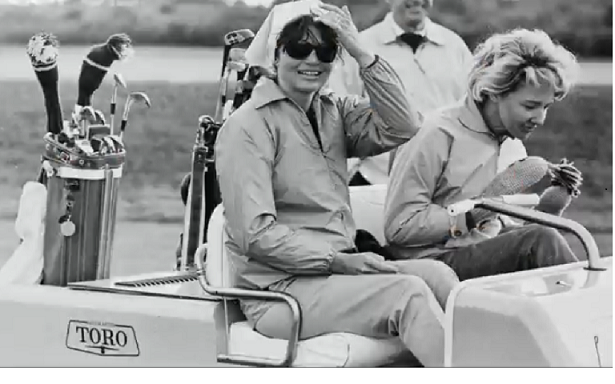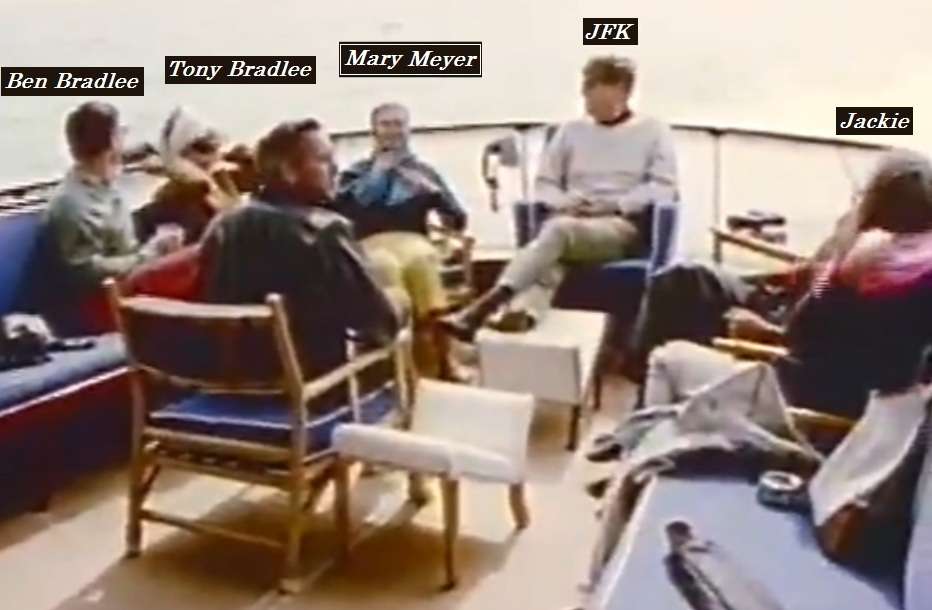Posted by Charleston Voice, 4.12.2012
The Murder of Mary Pinchot Meyer
Recently by Jacob G. Hornberger: The Kennedy Assassination
 |
| Jackie and Mary Pinchot Meyer. She had a close relationship with JFK at the time. |
The murder of Mary Pinchot Meyer is the subject of a fascinating and gripping new book by Peter Janney, who was childhood friends with Mary Meyer’s three sons and whose father himself was a high CIA official. Janney’s father and mother socialized in the 1950s with the Meyers and other high-level CIA officials.
Janney’s book, Mary’s Mosaic, is one of those books that you just can’t put down once you start reading it. It has everything a reader could ever want in a work of nonfiction – politics, love, sex, war, intrigue, history, culture, murder, spies, racism, and perhaps the biggest criminal trial in the history of our nation’s capital.

Just past noon on the day of the murder, Mary Meyer was on her daily walk on the C&O Canal Trail near the Key Bridge in Washington, D.C. Someone grabbed her and shot a .38-caliber bullet into the left side of her head. Meyer continued struggling despite the almost certainly fatal wound, so the murderer shot her again, this time downward through her right shoulder. The second bullet struck directly into her heart, killing her instantly.
There were two eyewitnesses, neither of whom, however, personally identified Crump. One witness, Henry Wiggins Jr., said that he saw a black man standing over the body and that the man wore a beige jacket, a dark cap, dark pants, and dark shoes. Another witness, William L. Mitchell, said that prior to the murder, he had been jogging on the trail when he saw a black man dressed in the same manner following Meyer a short time before she was killed.
When Crump was arrested, he was wearing dark pants and dark shoes. Police later found his beige jacket and dark cap in the water near the trail.
It certainly did not look good for Ray Crump, as he himself said to the police. Nonetheless, he steadfastly denied having anything to do with the murder.
Crump’s family retained one of D.C.’s most renowned and respected attorneys, an African American woman named Dovey Johnson Roundtree, who was around 50 years old at the time. She met with Crump and became absolutely convinced of his innocence. She agreed to take the case for a fee of one dollar.
When the case came to trial, the prosecution, which was led by one of the Justice Department’s top prosecutors, called 27 witnesses and introduced more than 50 exhibits. Dovey Roundtree presented 3 character witnesses and then rested her case, without calling Ray Crump to the stand.
The jury returned a verdict of not guilty.
After 35 years of researching and investigating the case, Janney pins the murder of Mary Pinchot Meyer on the Central Intelligence Agency. What would have been the CIA’s motive? To silence an independent-minded woman who apparently did not accept the official lone-nut explanation for the assassination of John F. Kennedy – and who had apparently concluded instead that Kennedy was the victim of a high-level conspiracy involving officials of the CIA.
Immediately after Kennedy’s assassination, Meyer telephoned famed LSD guru Timothy Leary, with whom she had consulted regarding the use of LSD, not only for herself but also for unidentified important men in Washington to whom she wanted to expose the drug. Highly emotional, she exclaimed to Leary, “They couldn’t control him anymore. He was changing too fast. They’ve covered everything up. I gotta come see you. I’m afraid. Be careful.”
Meyer was referring to the dramatic shift that took place within President Kennedy after the Cuban Missile Crisis, the seminal event that had brought the United States and the Soviet Union to the brink of nuclear war. As James W. Douglass carefully documents in his book JFK and the Unspeakable, a book that Janney mentions with favor, Kennedy was seared by that experience, especially given that his own children might well have been killed in the nuclear holocaust.
After the Cuban Missile Crisis, Kennedy began moving America in a dramatically different direction; he intended to end the Cold War through personal negotiations with Soviet premier Nikita Khrushchev, who desired to do the same thing. The idea was that the United States and the Soviet Union would peacefully coexist, much as communist China and the United States do today.
Kennedy’s dramatic shift was exemplified by his “Peace Speech” at American University, a speech that Soviet officials permitted to be broadcast all across the Soviet Union. That was followed by the Nuclear Test Ban Treaty, which in turn was followed by an executive order signed by Kennedy that began the withdrawal of troops from Vietnam.....Finish reading @Source


